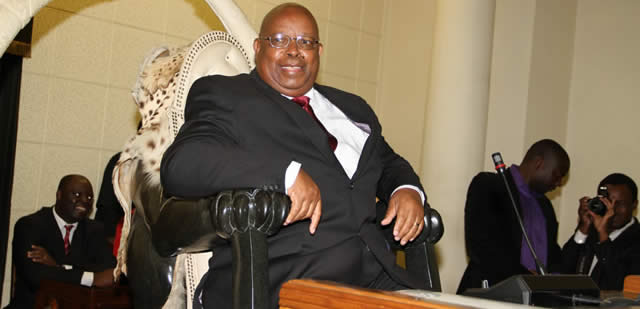‘Banks can’t meet miners’ requirements’

Golden Sibanda in BULAWAYO
Local banks do not have capacity to meet the huge capital requirements of mining companies due to the small amount and transitory nature of bank deposits they receive or mobilise, the Bankers Association of Zimbabwe said. Presenting a speech on bankers perspective yesterday on how mining firms can access finance in a depressed economy at the Mine Entra expo, BAZ immediate past president Mr George Guvamatanga said banks had about $4 billion in deposits yet mining firms required between $5 billion and $7 billion fresh capital to raise output and re-equip over the next five years.
The three-day 2014 Mine Entra mining, engineering and transport expo and conference is being held under the theme “Innovation, Beneficiation and Growth”.
Mr Guvamatanga said the local mining sector has traditionally been financed through internal funding from revenue inflows, shareholders equity, debt finance and structured finance among other sources of funding.
“However, in the liquidity constrained environment, banks in Zimbabwe are not in a position to meet the ($5 billion to $7 billion) capitalisation needs of many players in the mining sector,” he said.
Against this background, he said it was critical that mining companies considered alternative forms of accessing long-term capital for the country to realise its Zimbabwe Agenda for Sustainable Socio-Economic Transformation goals.
“Thinking outside the box becomes critical at this juncture of economic development in sourcing financing by mining houses so that goals of Zim-Asset are achieved.”
Mr Guvamatanga said available opportunities included issuance of corporate bonds, which are used to raise money effectively in order to expand a business. The ex-BAZ boss said a number of local mining firms had the capacity and appeal to do that.
Mr Guvamatanga also said mining houses could consider joint venture partnerships with other firms to form mutual benefits by sharing costs, risks and rewards.
“In this case the mining companies need to look outside the country for potential suitors that bring in money, capital and relevant skills,” he said adding “the arrangement should have exit an strategy and should have a predefined lifespan.”
Royalty-based financing, Mr Guvamatanga said, was another innovative way to raise capital for mining operations, which has been used for decades in oil and gas projects.
“The interesting part about royalty-based financing is that you can get the money you need while decreasing the amount of equity you have to give up,” he said.
He said local capital markets have failed to take off meaningfully, with the Zimbabwe Stock Exchange also struggling to provide a platform to raise enough capital.
“This then calls for the economic players to strategise and look at the means of accessing finance from outside the country. We need big corporates, including Bindura Nickel Corporation taking this route,” Mr Guvamatanga said.
The mining sector is strategic to the growth of the economy and has been identified as the cornerstone of growth in the short to medium-term. It has grown at an average of 30 percent since dollarisation in 2009 and currently contributes about 16 percent to the Gross Domestic Product of Zimbabwe.
Mr Guvamatanga also pointed that Government’s pre-occupation with maximising revenue made giving credit to the mining sector risky and said the sector would only be able to secure meaningful funding if Government’s policy shifted towards emphasis on creating an enabling environment.
Mining by its nature is capital intensive. For instance, Zimplats invested $440 million on capital projects between 2002 and March 2014 and is working on portal 5 under its Ngezi phase two project, which will require about $460 million.








Comments